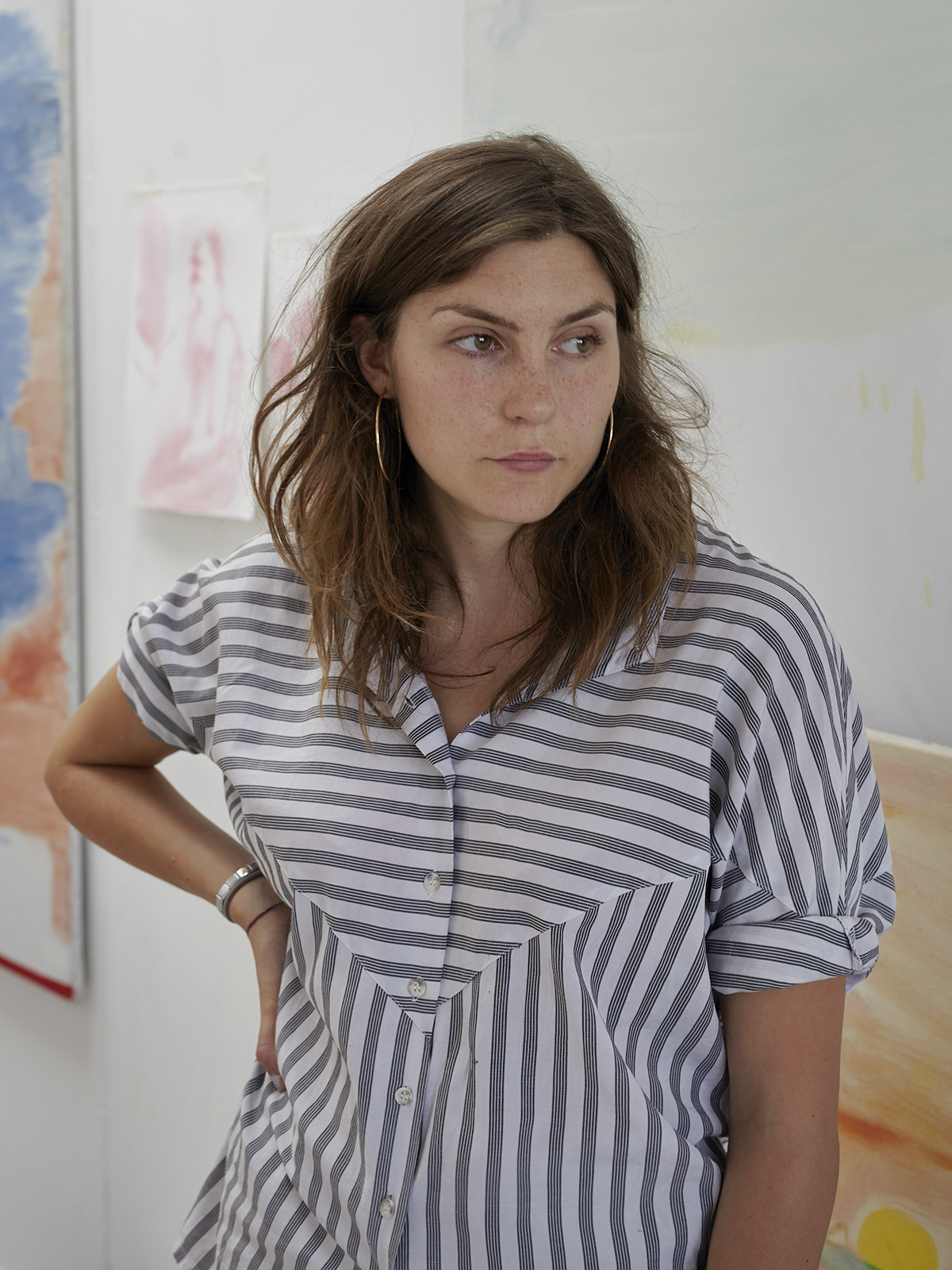
Boyd has recently graduated from the Royal Academy and is currently exhibiting as part of White Cube Bermondsey’s group show Dreamers Awake. She will also be collaborating on a new exhibition this autumn as part of the Folkestone Triennial. I spoke with the artist in her studio.
You’re known for creating very large paintings that almost dwarf the viewer, have you always worked on such a vast scale?
I started upscaling massively during my third and fourth year at Glasgow School of Art, every time I move studios I think “Why do I do this to myself?” Since then I’ve enjoyed working on really big canvases that almost require a performance to deal with them. I also create smaller works on paper, which often work as experiments for the bigger pieces, they directly relate to each other. I’m also getting more and more aware of what working large does to other spatial dimensions. From my own experiences of looking at art I know how an encounter with a small work tends to be more intimate. I’m dealing with the awareness of one’s own body and the environment in my paintings, so that shift is really important for me.
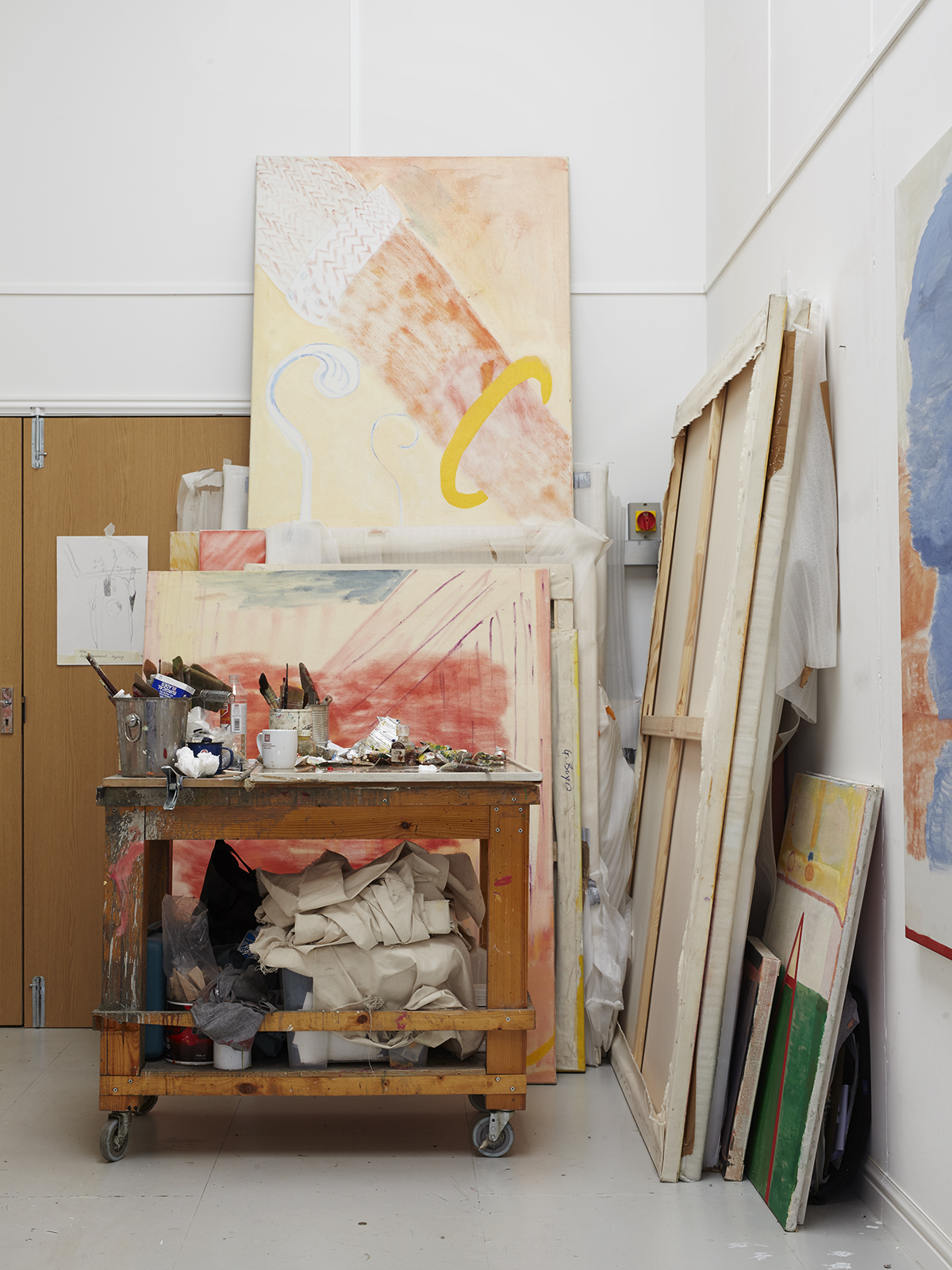
In your life-sized work there is a direct dialogue with the viewer. Your scenes always seem fully realized, even if you’re not really sure what’s going on. That sense of totality is still there.
I’m interested in slippery topics that are quite hard to articulate, and about something having a “given-ness”. I know when a work is finished because I arrive at an atmosphere, where it just feels whole, rather than reaching a point where there is a definite and understandable resolution. That can be a really ambiguous space–in the Royal Academy degree show it became more and more ambiguous. These things are so subjective, but it’s done when it feels independent of me… when it reaches that point of a believable world. For me the notion of “feeling real”, even though the subject is completely unknown, is closer to reality than a realistic painting.

That’s a good point, it’s a sensory thing. If you’re looking at something based on the principle of facsimile you know what that’s supposed to be, but when you smell something that triggers a memory, that evocative nature is somehow more valid.
Exactly, it’s like it bypasses some cognitive understanding. In the degree show I collaborated with a sculptor called Josie (Josephine Baker-Heaslip). We worked together to create two separate rooms, treating the whole space as one. I used this pink felt as cladding on the walls as a way of experimenting with something that appears saccharine or medicinal. In a way it’s comforting, but it’s also disconcerting. It made some of my paintings seem anaemic but made others seem as if they were windows into other worlds.
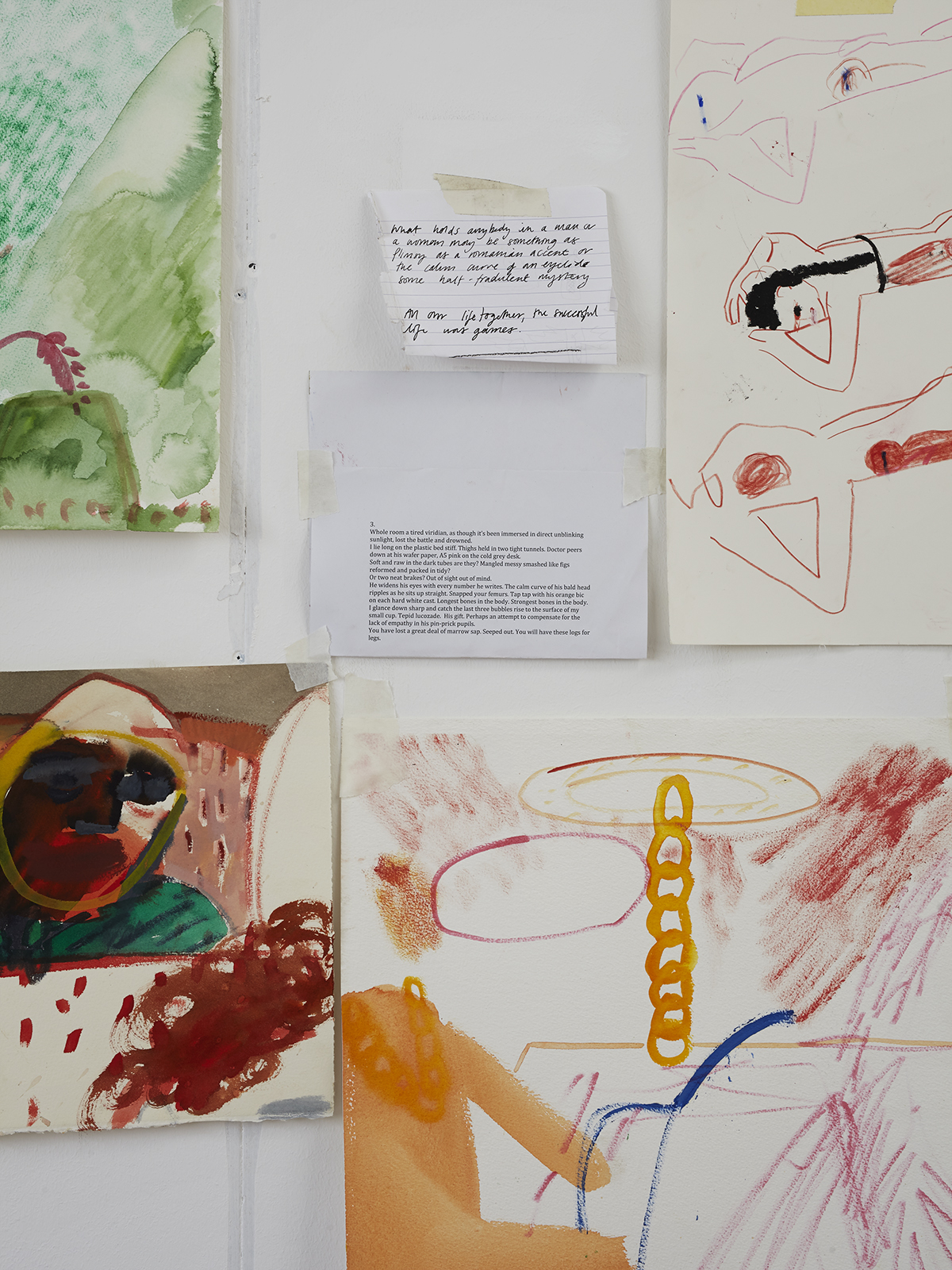
You have also been featured in the White Cube’s Dreamers Awake exhibition, which examines female surrealism, how do you relate to that theme?
The works on show were from a commission by the Folio Society, illustrating ten extracts from Sigmund Freud’s Interpreting Dreams. They’re all either referencing his own dreams or that of his clients. It’s a cyclical process: the clients translate their dreams to themselves, which are in turn translated by Freud, he’s translating them into the book and I’m translating them into images. I like the continuous extraction. It’s really close to the way I work, taking a new context from a singular meaning while still maintaining the original mood.
Freud also believed in definitive speculation around what particular images mean. He would succinctly explain any description that his client gave him in direct relation to their life. I don’t agree with that. So it’s interesting to illustrate his work and remove things from that context. I’m enjoying the complexities, which is much more true to life–to agree with some things without buying into all of it.
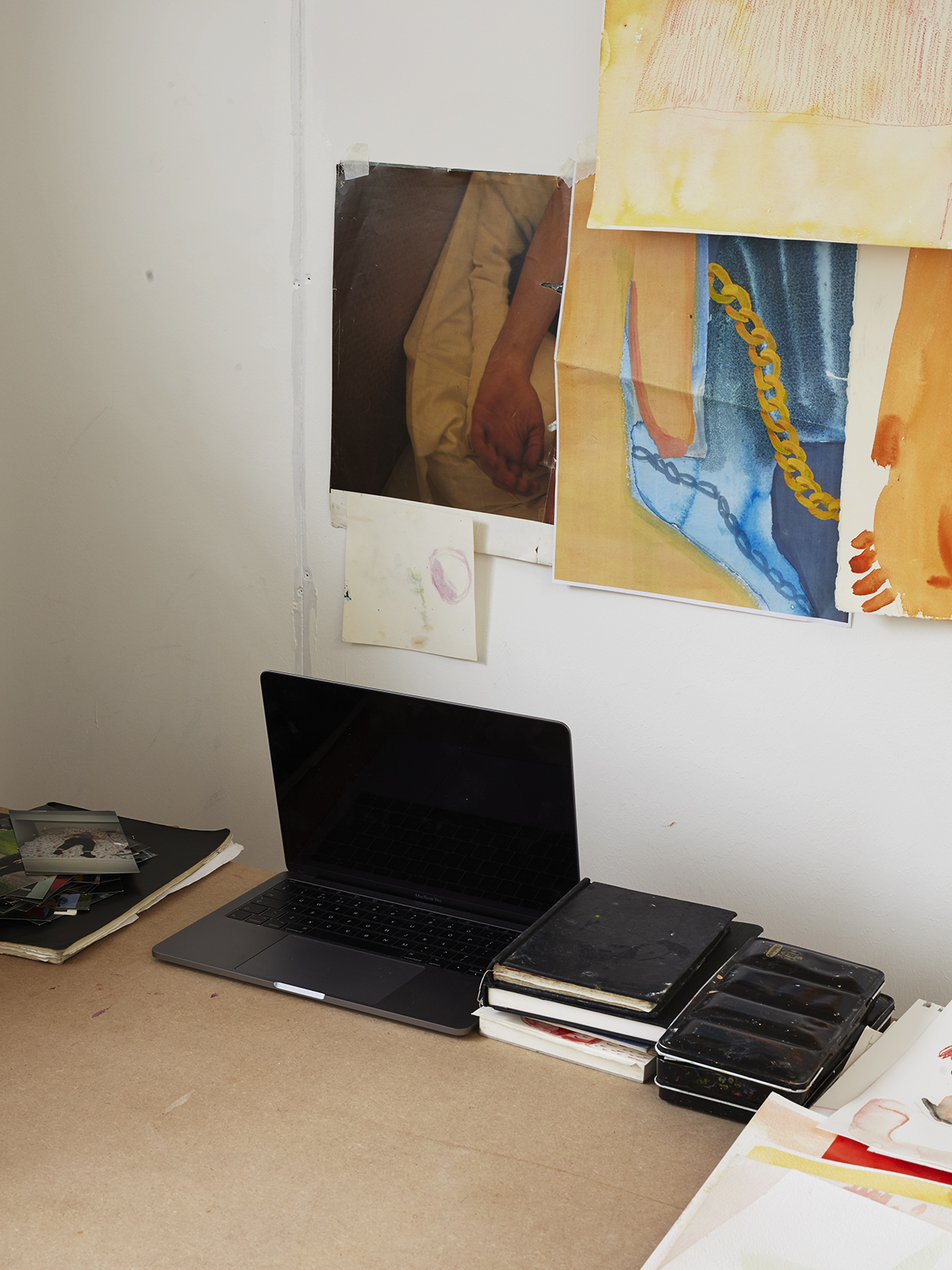
There’s an element of visual trickery in your work, which reminds me of dreaming. Your eye can translate these pictures in so many ways. I think that’s why people enjoy being with your paintings because they’re so subjective and people can have their own fun with it.
That’s great to hear, I’m so interested in dreams. When recalling them it’s as if you’re pulling a thread of memory, it requires this really strange concentration that is unlike anything else. It’s like something dancing on the periphery of your line of sight. You don’t want to look directly at it because it might go completely, but you’re trying to work out this particular image or emotion. You’re attempting to tease a whole world out of your mind, which you know you just had.
I’m also fascinated by how you remember a vivid dream. As time passes you might only recall a single frame or an emotion. This is a very liberating, useful method in terms of creativity: to understand that you can simply enjoy holding onto one fragment from a film or story and it doesn’t have to be tied to that particular source. I have notebooks full of evocative phrases that I’ve jotted down while reading. Of course, it’s good to remember where they’re from, but I like giving them a new narrative.
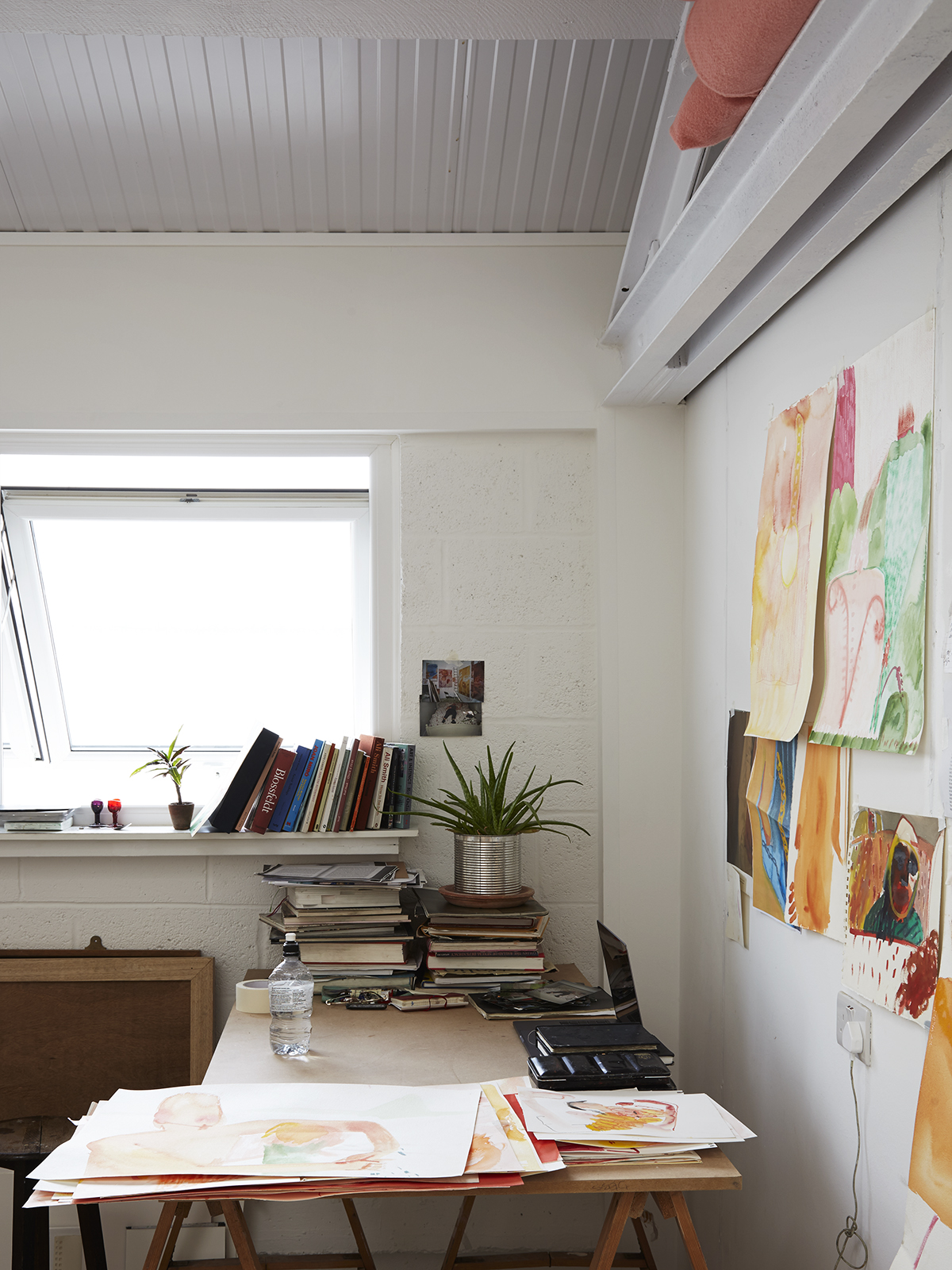
It’s great that you’ve embraced that freedom. Sometimes people can worry about loading an original context into their own practice, which is quite stifling.
Yes, exactly. It’s similar to treating everything like vision, like snapshot imagery. When I’m not feeling my way through a painting I often use photographs as starting points, I’ve used the same friends as models for about ten years. It’s about being comfortable but also feeling close to somebody or inspired by them. For me that sense is always present in the work, even if no-one else sees it.
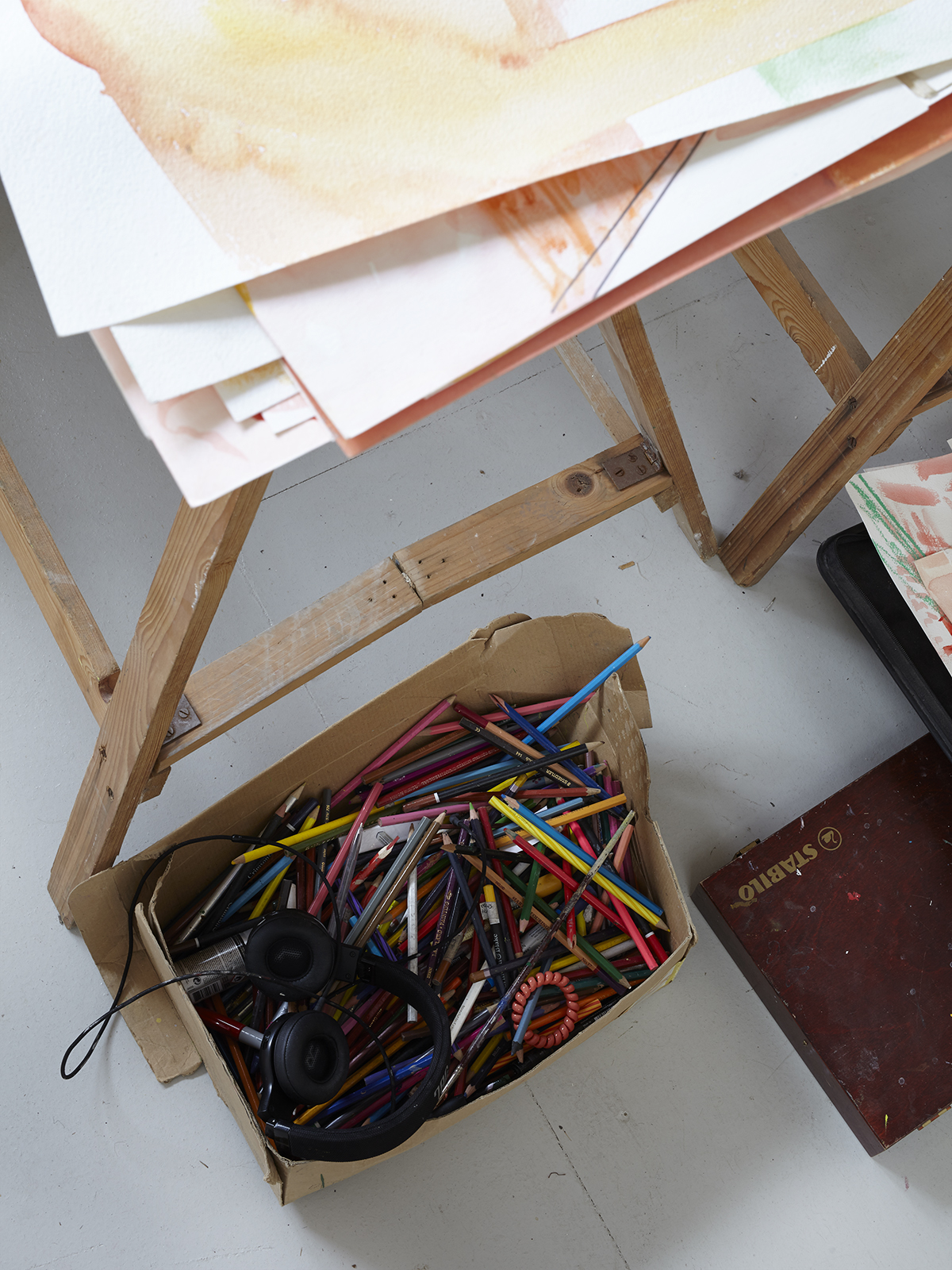
Do the people you depict directly shape the aesthetics and emotions of the work?
I think it’s impossible to avoid. Even when you’re reducing and simplifying a figure so much, the spirit is still there–I really believe that. You never have a preconceived idea of what people are going to see, but I hope that the way I make things always leaves traces, so there is not a huge gulf between my own journey and what people are experiencing. I think it comes across in some way and that’s really important in terms of objects and figures and places. For me painting isn’t about the representation or the likeness, it’s about the spirit. Otherwise, what’s the point?
Photographs © Tim Smyth.






